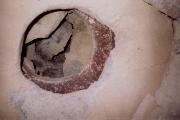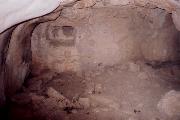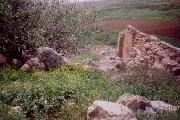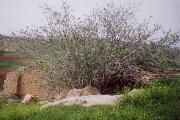Jordan's Mills
Click on the pictures for full-size images in a separate window
Wadi Azraq (near Fuheis)
Wadi Azraq flows from the Salt road, below Hummar (where it is called Wadi Hummar), to join Wadi Shuayb a short distance below the Salt WTP. Today the spring no longer flows. Instead, a pumping station ensures that the water reaches the thirsty citizens of Amman.
All that remains of the aqueduct is hidden behind a small tree, but the canal that brought it water can be seen along the slope.
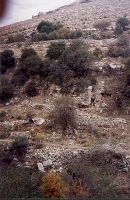
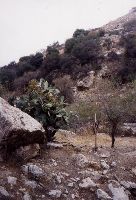
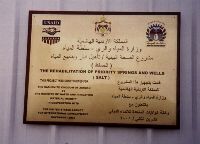
Shuayb Mill Complex (upper)
Most of the mills around Jordan are individual buildings, dotted down the valleys, as with the Shuayb. Just below the confluence with Wadi Azraq, however, beside a new pumping station, is a mill complex that was almost a village. Behind the pumping station is a tall aqueduct, with the wheel-house below. Today the last wheel is in two pieces beside the building. The southern portion of the mill seems newer, with more clean-cut stones. This has two drop-holes, leading to a milling building that is almost inaccessible without walking through the stream. The roof has collapsed so the location of the millstones is hidden.
Between the two sections are the remains of other mill buildings. These could have been destroyed by the large boulders that are scattered around, possibly dislodged by an earthquake that the mill never survived.
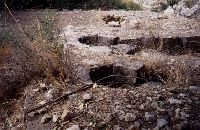
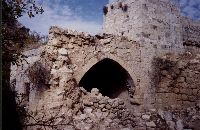

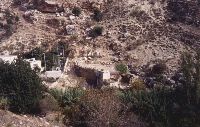
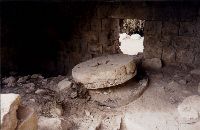
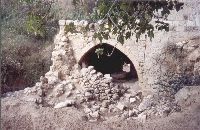
Shuayb Mill Complex (lower)
The Wadi Shuayb bridge is located just below the confluence of the Fuheis/Mahis wadis (Wadi Hudeidun) with the Shuayb. On the triangle formed where the streams meet is another mill, possibly with a second aqueduct and drop to the Hudeidun side. The area is given over to citrus orchards, but nestled among the oranges and lemons are two other mills. One, on the west side, is almost invisible among the fruit trees, but the other is clearly seen from the Mahis road (in the picture) or the Shuayb road.

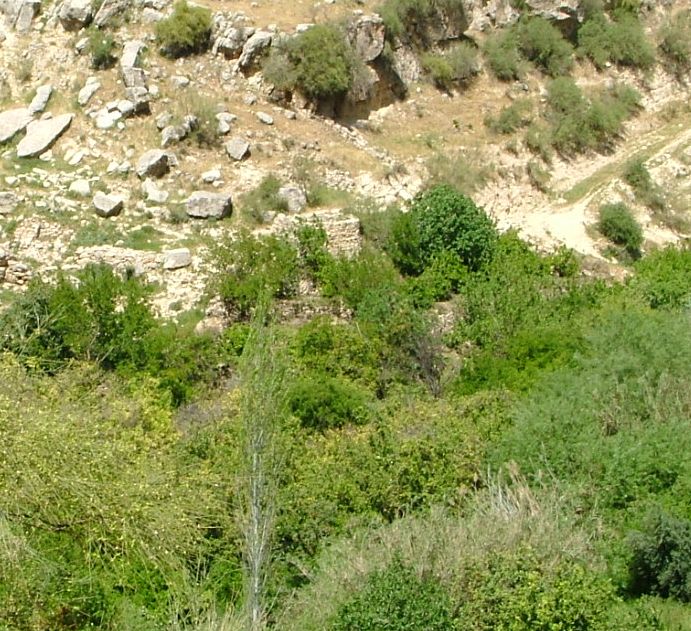

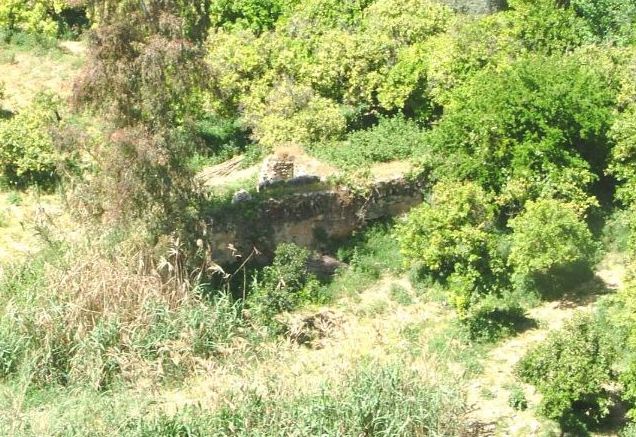

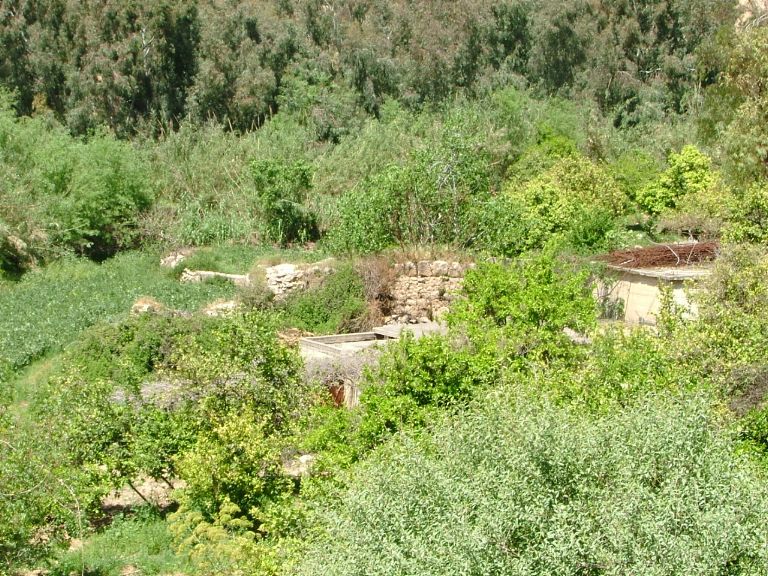
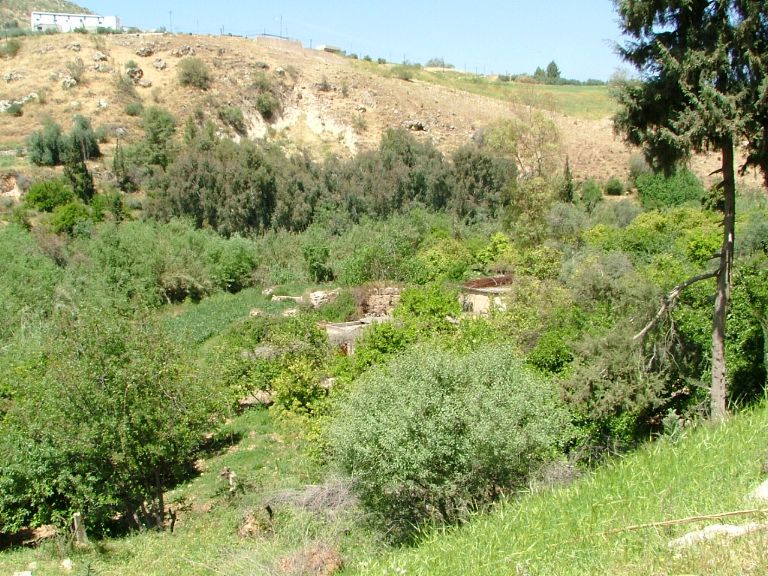
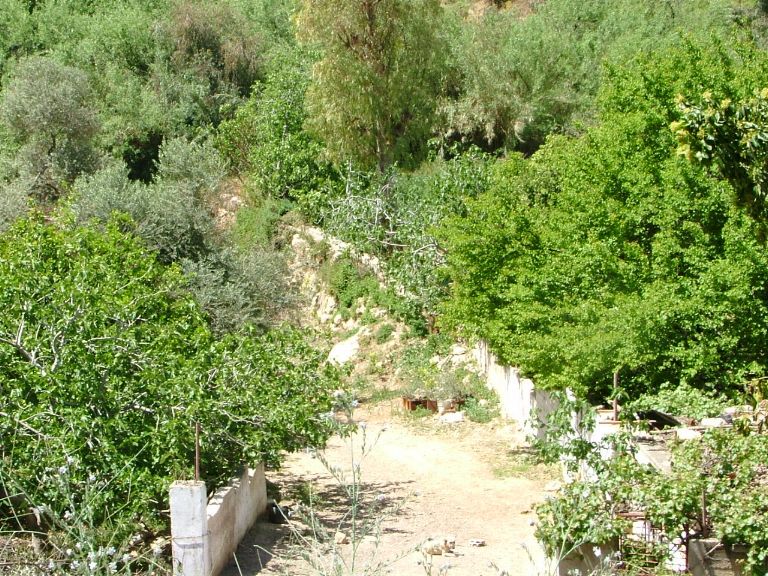
Wadi Shuayb valley
As you descend the Wadi Shuayb from Salt, the old Ottoman capital, you pass a series of mill aqueducts. Their condition varies, and there is no sign of the mill buildings themselves. It is quite likely that the course of the stream was diverted to allow for construction of the road. As it is, in almost all cases the stream runs directly beneath these mills.
The first is directly across the road from the Wadi Shuayb spring that issues from a pipe in the wall, about 200m below the bus station. The others are spaced about 0.5km apart, downstream.
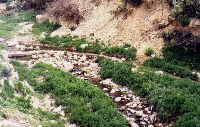
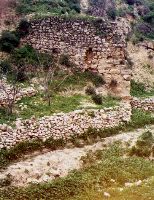
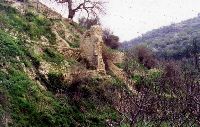
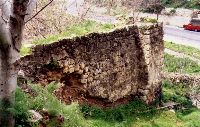
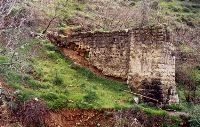
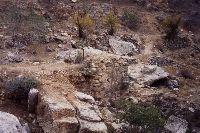
Wadi Seir Mills
Wadi Seir also has a perennial spring, though as usual its location is marked by a contemporary pumping station. The most complete mill building I have found is located in the wadi about 300m below the pumping station. Other buildings are dotted down the valley, one is in plain sight beside the bridge that carries the road to the north side of the wadi.
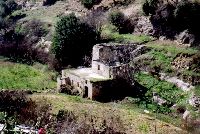

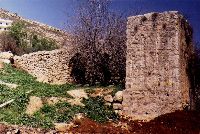
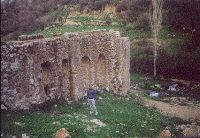
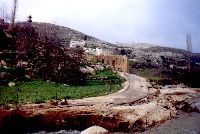
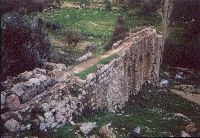
Rumman Mills
For me the Rumman mills, though the least-visited, are special. They were the first I had seen that were in good enough condition to observe both the drop and the outlet. The water descends about 8-10 meters, and then is funnelled through a horizontal hole into the mill house. I have not yet found evidence of a water wheel of any kind, but at Rumman recently I found one of the millstones. Crevices in the walls of the building indicate where wooden structures existed, that provided a frame for the mechanism that transfered the water power to the grinding stone.
Two buildings have been observed so far, below the village of Rumman, in Wadi Rumeimin, just a short distance above the level of the King Talal Reservoir. The first is a one-hole mill, but the mill house is open at the front, allowing the internal structure to be seen.
The other, about 200m 'downstream' is a 2-hole mill. It is less complete, possibly having suffered from hillside erosion.

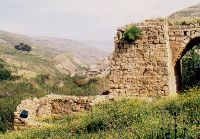
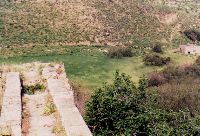
New

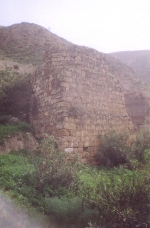
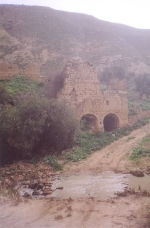
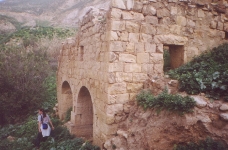
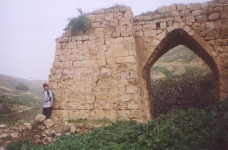
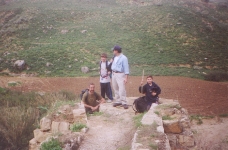
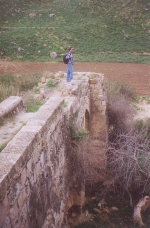
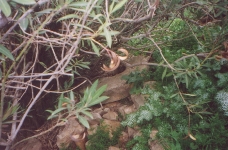

Seil Hisban
Walking around the area between Madaba and Jerash it is exciting to come across a new find. Seil Hisban, another perennial stream whose spring is about 100m from this mill, is not a narrow, 'youthful' valley like Wadi Seir or Wadi Shuayb. As the picture shows, the valley is quite wide and flat at this point, and the mill would actually be quite close to where at least some of the grain was grown.
Upper
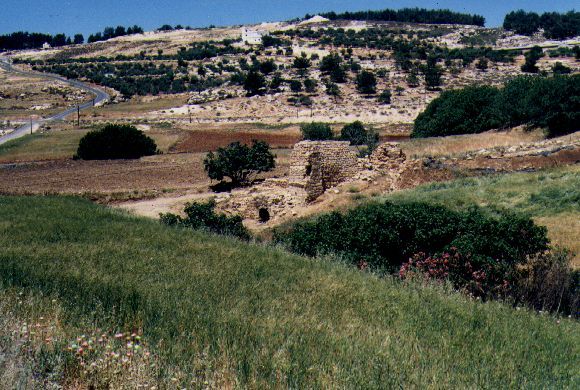
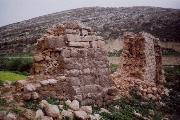

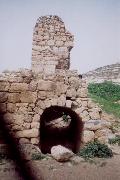
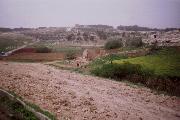
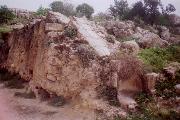
Village
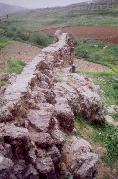

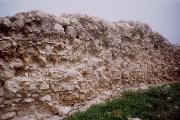
Lower

